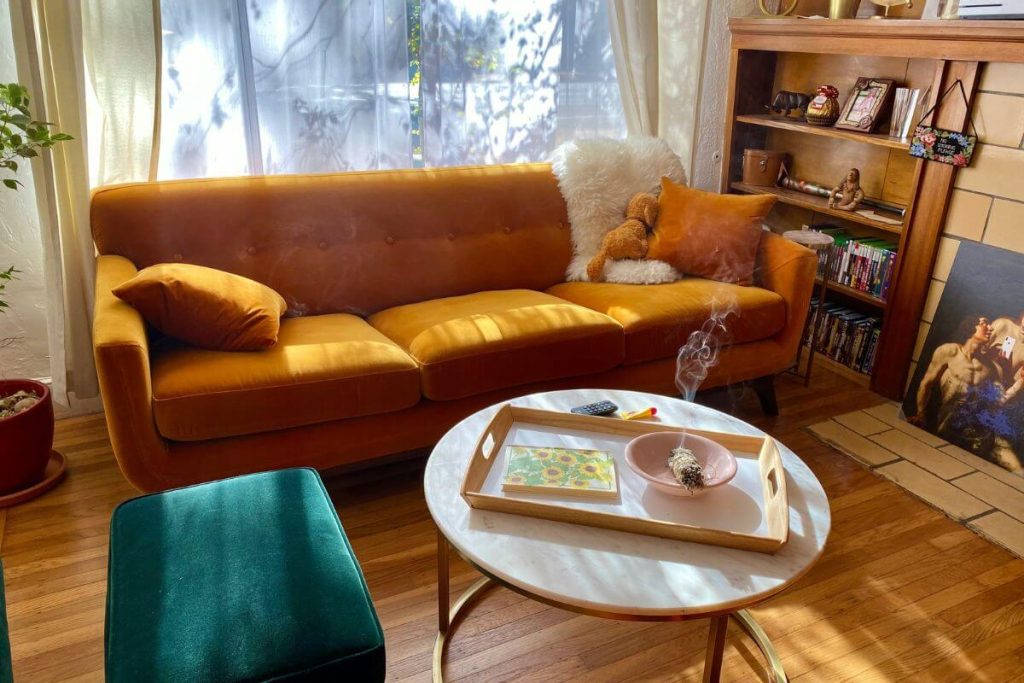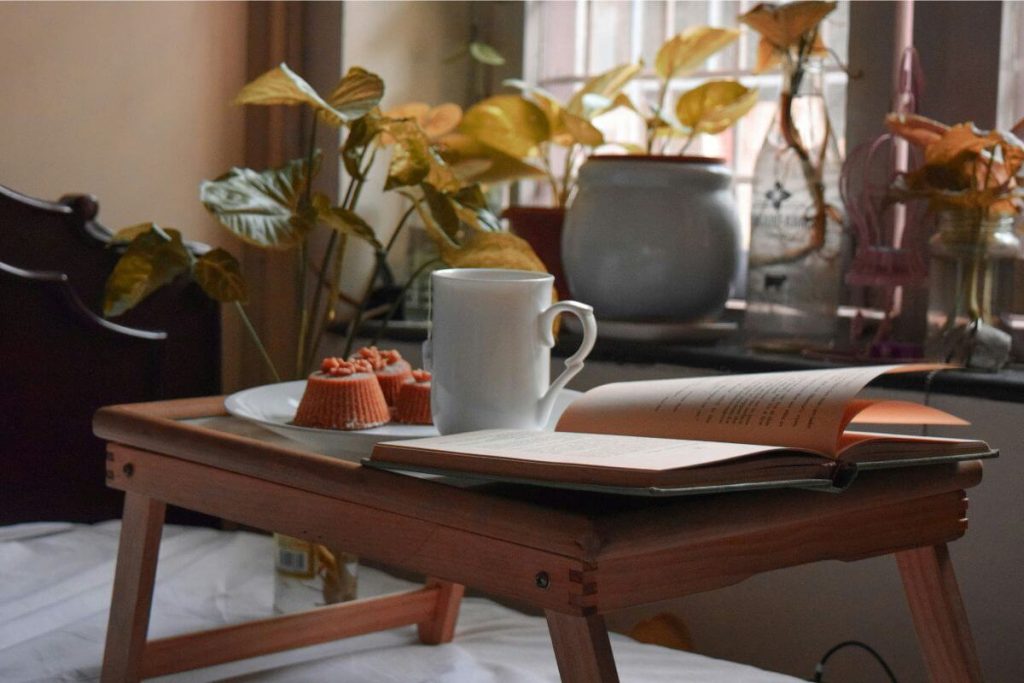
Transforming your living room into an eco-friendly haven doesn’t have to be expensive. In 2025, creating a sustainable living room on a budget is easier than ever, with affordable options that blend style, comfort, and environmental responsibility. Whether you’re a renter in a bustling city like Dhaka or a homeowner eager to green your space, this guide offers practical tips to craft a sustainable living room without breaking the bank. From thrifted furniture to low-VOC paints, we’ll show you how to make eco-conscious choices that fit your wallet and values.
Why Choose a Sustainable Living Room?
A sustainable living room reduces your environmental footprint through eco-friendly materials, minimal waste, and energy efficiency. It creates a healthier, cozier space free from harmful chemicals. Plus, sustainable decor often saves money over time with durable second-hand finds and energy-efficient upgrades. According to the Environmental Protection Agency (EPA), choosing sustainable products can improve indoor air quality. Ready to build your sustainable living room on a budget? Here are seven affordable tips for 2025.
1. Shop Second-Hand Furniture for a Sustainable Living Room on a Budget

Thrifted or reclaimed furniture is a cornerstone of eco-friendly design. It keeps items out of landfills and adds unique charm to your living room at a fraction of the cost of new pieces.
- How to Do It: Visit thrift stores, flea markets, or platforms like Facebook Marketplace for solid wood tables, chairs, or sofas. In Dhaka, explore Elephant Road for second-hand furniture shops. Choose natural materials like wood or bamboo, avoiding particleboard with formaldehyde.
- Budget Tip: Aim for $20-$50 for a coffee table or $100-$150 for a sofa. Refinish scratches with eco-friendly beeswax polish for a fresh look.
- Eco-Benefit: Reusing furniture reduces deforestation and manufacturing emissions.
Pro Tip: Inspect pieces for sturdiness and clean with natural disinfectants like vinegar for safety.
2. Use Low-VOC Paints for Eco-Friendly Color
A fresh coat of paint transforms your living room, but traditional paints release volatile organic compounds (VOCs) that harm air quality. Low-VOC or zero-VOC paints are safer, sustainable alternatives.
- How to Do It: Opt for brands like Benjamin Moore Natura or Asian Paints Royale Health Shield, available in Bangladesh, costing $30-$50 per gallon. Choose earthy tones like sage green or terracotta for a natural vibe, perfect for a sustainable living room on a budget.
- Budget Tip: Paint one accent wall to save money while creating a trendy focal point. Use leftovers for DIY art or furniture touch-ups.
- Eco-Benefit: Low-VOC paints reduce indoor air pollution, per the EPA.
Pro Tip: Look for Green Seal certifications on paint cans to confirm eco-friendliness.
3. Add Indoor Plants for Air Quality and Style
Plants are nature’s air purifiers, removing toxins and bringing vibrancy to your living room. They’re budget-friendly, especially when sourced locally or propagated.
- How to Do It: Choose low-maintenance plants like snake plants, pothos, or peace lilies, which thrive in low light and purify air, per NASA’s Clean Air Study. Buy small plants for $5-$15 at nurseries or propagate cuttings from friends.
- Budget Tip: Use old jars or thrifted pots as planters. Create a plant corner with 3-5 pots for under $30.
- Eco-Benefit: Plants improve air quality and reduce stress.
Pro Tip: Water plants with collected rainwater to save resources, ideal for urban areas like Dhaka.
4. Choose Sustainable Textiles Like Jute and Cotton
Curtains, rugs, and pillows make your living room cozy, but synthetic fabrics like polyester contribute to microplastic pollution. Natural textiles like jute, hemp, or organic cotton are eco-friendly and affordable.
- How to Do It: Source handmade jute rugs from local markets in Bangladesh for $20-$50 (4×6 ft). Buy organic cotton or linen curtains from stores like Aarong, starting at $15 per panel. Add thrifted pillows for $5-$10 each.
- Budget Tip: Sew pillow covers from old cotton sarees or fabric scraps for under $10.
- Eco-Benefit: Natural textiles are biodegradable and support sustainable farming.
Pro Tip: Wash with eco-friendly detergents to maintain green credentials.
5. Switch to Energy-Efficient Lighting
LED bulbs are a simple way to make your living room sustainable. They use up to 80% less energy than incandescent bulbs, per Energy Star, and last longer, saving money.
- How to Do It: Replace bulbs with LEDs costing $2-$5 each at local stores or online. Choose warm white (2700K) for coziness. Add a thrifted lampshade ($5-$15) for style.
- Budget Tip: Start with high-use lamps to maximize savings. A pack of four LEDs costs around $10.
- Eco-Benefit: LEDs reduce energy consumption and carbon emissions.
Pro Tip: Add a dimmer switch ($10-$20) to adjust lighting and save more energy.
6. DIY Decor with Reclaimed Materials
Reclaimed materials let you create unique, eco-friendly decor on a budget, perfect for a sustainable living room.
- How to Do It: Build a coffee table from reclaimed wood pallets (often free from warehouses) or make wall art from driftwood or old frames. A pallet table costs under $20 with basic tools and eco-friendly varnish.
- Budget Tip: Source free wood scraps from construction sites or recycling centers. Sand and seal with natural oils.
- Eco-Benefit: Reusing materials reduces landfill waste.
Pro Tip: Share your DIY projects on social media with #GreenWithMrpsandex to inspire others.
7. Declutter for a Minimalist, Sustainable Living Room on a Budget
A sustainable living room is about intentional choices. Decluttering creates a spacious, eco-friendly space while reducing the need for new purchases.
- How to Do It: Keep only items you love or use. Donate or sell unused furniture, decor, or electronics via local groups or platforms like Bikroy in Bangladesh. Reinvest earnings into green upgrades.
- Budget Tip: Organize with thrifted baskets ($5-$10) for a tidy look without new storage.
- Eco-Benefit: Minimalism promotes mindful consumption.
Pro Tip: Use the “one-in, one-out” rule: remove an old item for every new one.
Budget Breakdown for Your Sustainable Living Room
Here’s a sample budget for a 150 sq ft living room makeover, keeping costs under $200:
- Second-hand coffee table: $30
- Low-VOC paint (accent wall): $15
- Three indoor plants: $20
- Jute rug: $40
- LED bulbs (pack of four): $10
- Thrifted throw pillows: $15
- DIY pallet wall art: $10
- Total: $140
Adjust based on local prices or needs. Prioritize quality for longevity.
Busting Myths About Sustainable Living Rooms
- Myth: “Eco-friendly decor is costly.”
Truth: Thrifted items and local materials like jute are often cheaper than mass-produced decor. - Myth: “Sustainable means sacrificing style.”
Truth: Natural textures and earthy tones are trendy in 2025. - Myth: “Renters can’t go green.”
Truth: Plants, curtains, and LEDs are renter-friendly.
Start Your Green Journey Today
Creating a sustainable living room on a budget in 2025 is simple and rewarding. With second-hand furniture, low-VOC paints, natural textiles, and energy-efficient lighting, you can craft a stylish, eco-friendly space that reflects your values. Begin with one tip—like adding a plant or thrifting a table—and build from there. Your home, wallet, and the planet will thank you.
What’s your first step toward a sustainable living room on a budget? Share your ideas or eco-friendly finds in the comments! For more tips, visit our posts on zero-waste kitchen hacks (#) or urban green living (#) on mrpsandex.com.
